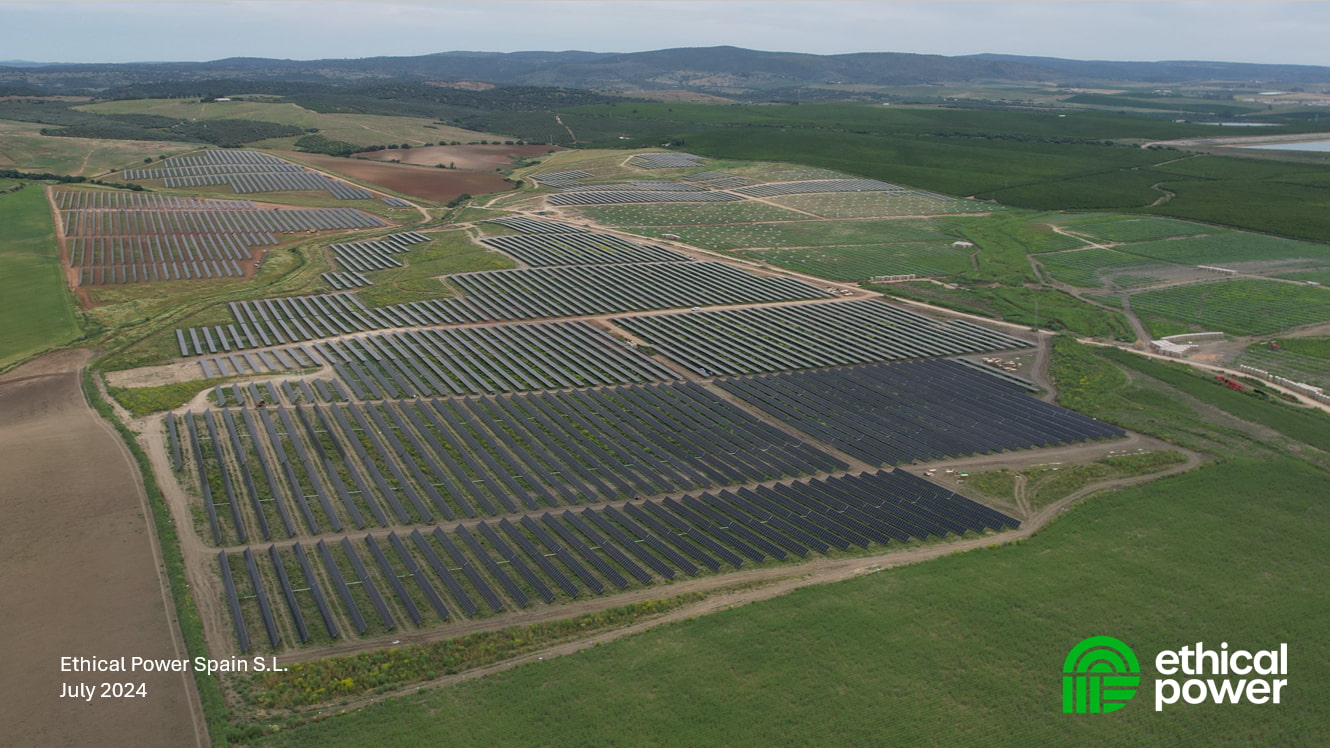
As with all technologies, solar energy is subject to constant improvements and innovations. Where it was once a promising avenue for clean energy generation, it is now highly cost-effective and relatively easy to deploy.
In the race to develop more sustainable and resilient energy solutions, a new challenger has emerged in the shape of co-location.
The combination of solar PV and battery energy storage systems (BESS) can result in increased energy efficiency, reduced wastage, and greater revenue potential.
Our Construction Director, Simona Scanu, sat down with the Institution of Power Engineers to shed light on how we help our customers maximise revenue on their renewable assets. This is a brief rundown of the key points, but you can find a link to the full paper below.
Why solar?
Unlike other renewable energy sources, such as wind or hydro, which can generate power intermittently throughout the day and night, solar PV follows a predictable generation pattern, producing electricity only during daylight hours. However, energy demand often peaks in the early morning and evening when solar generation is minimal. This misalignment between solar energy production and peak consumption periods creates an opportunity for BESS to bridge the gap.
By storing excess energy generated during the day—often referred to as “clipped energy”—and discharging it during periods of high demand, co-located solar PV and BESS installations help to optimize resource utilization, minimize curtailment, and maximize economic returns.
Beyond improving the efficiency of solar power, the integration of BESS also reduces project development and construction costs compared to separate solar PV and battery installations. Sharing infrastructure, grid connections, and operational systems results in significant cost savings, making co-location an increasingly attractive option for developers, investors, and utilities.
Contracted revenue streams
Contracted revenue streams are based on agreements between the project developer and an off-taker—typically a utility, corporation, or government entity—that commits to purchasing the power output under a Power Purchase Agreement (PPA). PPAs provide long-term financial stability by securing fixed or predictable payments over a set duration, typically spanning 10 to 15 years. These agreements help project developers secure financing, as they provide guaranteed revenue streams that reduce investment risk.
In the case of solar PV + BESS projects, PPAs can include provisions for firm capacity, time-shifted delivery, and ancillary services that enhance the value proposition of the energy storage component. By guaranteeing a consistent power supply, even during periods of low solar generation, BESS enables developers to offer more competitive and reliable PPAs.
Merchant market revenues
In contrast to contracted revenues, merchant market revenues are subject to the dynamic nature of electricity market pricing. In this model, power producers sell electricity directly into wholesale markets, taking advantage of price fluctuations. While this approach involves greater risk due to market volatility, it also presents opportunities for higher profits, especially in energy markets with significant price variability.
By leveraging predictive analytics, machine learning, and real-time market data, solar PV + BESS operators can optimize charging and discharging schedules to maximize revenues. The ability to respond flexibly to price signals allows these systems to capture price arbitrage opportunities, participate in ancillary services markets, and provide grid-balancing functions that command premium compensation.
Optimisation Methods
Maximising the efficiency of a renewable asset involves knowledge of the technology, as well as the grid. Each project comes with its own strengths and challenges, but there are a few techniques that can be applied to most co-located projects.
AC vs. DC coupling in solar PV + BESS configurations
There are two key configurations used when integrating BESS and solar PV AC coupling and DC coupling. Each configuration has its own set of technical and economic considerations, and the specific constraints and goals of each project are paramount when deciding between the two. The best way to choose is to speak with an expert, but there are some key defining characteristics of each method.
AC-coupled systems
In AC-coupled configurations, the solar PV system and BESS each have their own inverters and are connected to the grid at a common point. Key benefits include:
- Operational Independence: The solar PV and BESS systems function autonomously, allowing for greater flexibility.
- Modularity & Scalability: AC-coupled systems can be easily expanded by adding more solar panels or battery capacity.
- Participation in Ancillary Services Markets: BESS can interact directly with the grid, providing frequency regulation, demand response, and other services.
DC-coupled systems
In DC-coupled configurations, the solar PV system and BESS share a single inverter, which converts DC electricity from both sources into AC power. Advantages include:
- Higher Efficiency: By avoiding multiple conversion stages, DC coupling minimizes energy losses.
- Lower Equipment Costs: A single inverter reduces capital expenses compared to AC-coupled systems.
- Optimized Clipped Energy Capture: DC-coupled systems efficiently store excess solar energy without requiring additional conversions.
The co-location of solar PV and BESS represents a transformative opportunity for the renewable energy sector and can be expected to accelerate as technological advancements continue to drive down costs and improve system performance. With the right delivery partner, operators can optimize energy delivery, capitalize on market opportunities, and contribute to a more resilient and sustainable energy system.
If you would like to learn more about how to optimise the viability of your project through co-location, you can read the full paper below. Alternatively, get in touch to speak with one of our co-location experts to discuss your project needs.